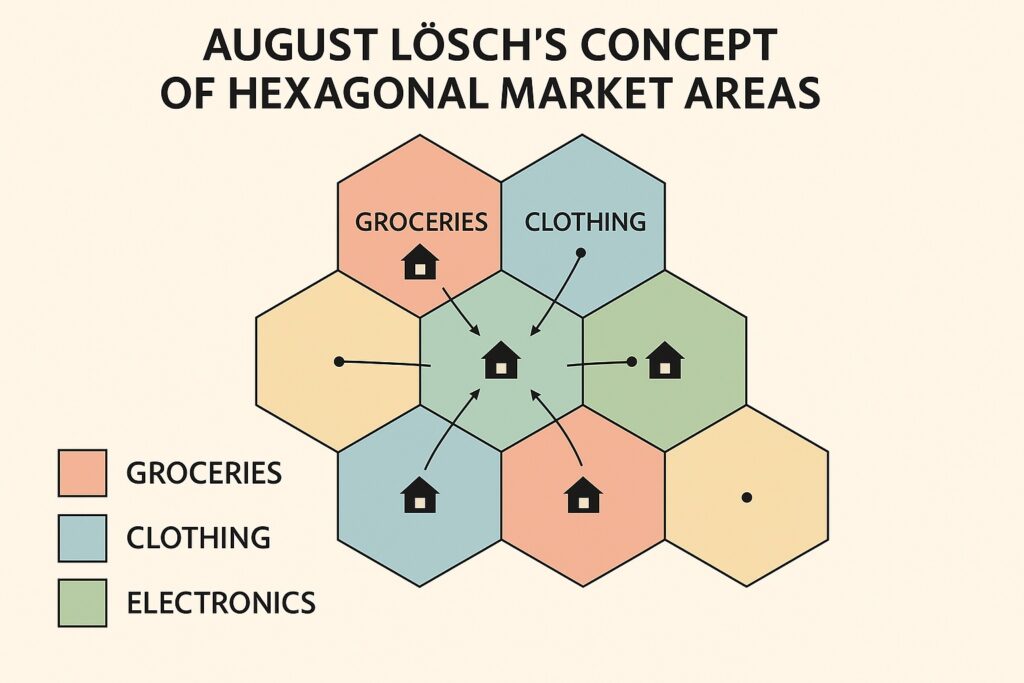The Central Place Theory (CPT) aims to explain the size, number, and distribution of human settlements in an urban system. While the theory was first developed by Walter Christaller in 1933, it was later refined and expanded by August Losch in 1940. Losch’s contributions made the model more flexible and applicable to real-world scenarios, especially in terms of economics and market areas. It sought to improve upon the limitations of Christaller’s model.
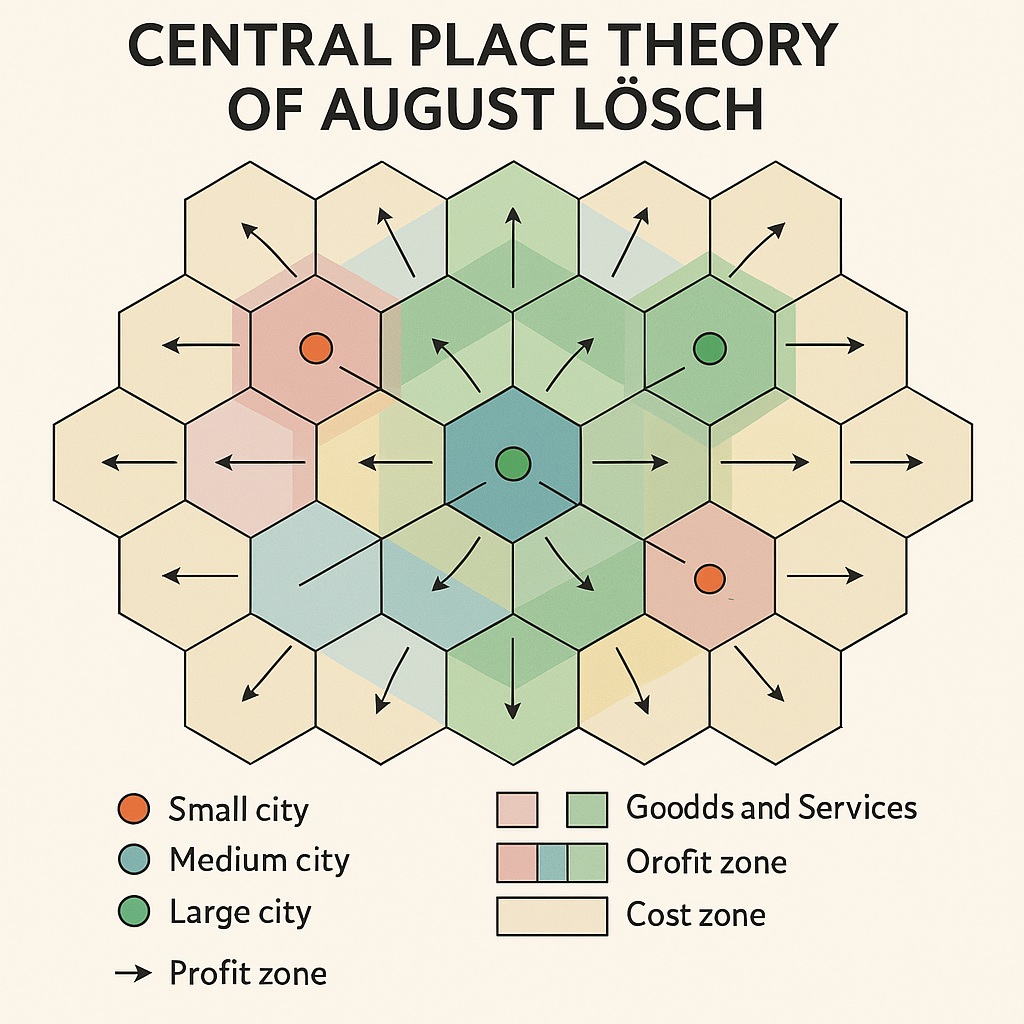
Table of Contents
Background: Limitations of Christaller’s Theory
Walter Christaller’s model was based on a few rigid assumptions, such as:
-
Flat and featureless plain (isotropic surface)
-
Uniform population and purchasing power
-
Goods and services distributed from central places in a strict hierarchy
-
Hexagonal market areas for spatial efficiency
Although elegant, Christaller’s model oversimplified reality. Losch sought to make the theory more realistic and economically grounded.
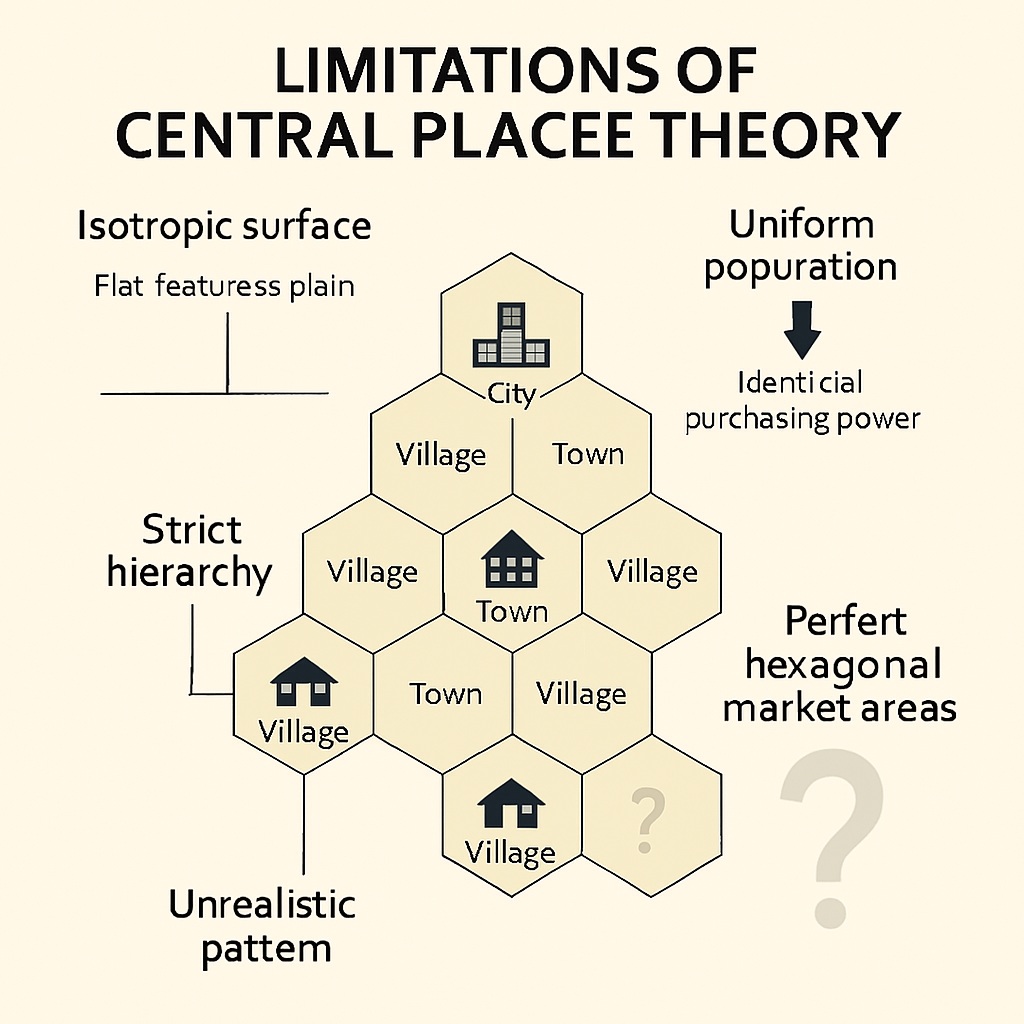
Objective
August Losch aimed to identify the optimal location for economic activities to maximize profit rather than merely explaining settlement patterns. His focus was on market-based systems and consumer behavior.
Central Place Theories of Losch
-
Multiple Central Places: Instead of a single hierarchical system, Losch visualized multiple overlapping market areas with central places offering various goods. Unlike Christaller’s model, which is built around a fixed hierarchy of settlements (village → town → city), August Lösch introduced the idea of multiple central places that serve overlapping market areas, each offering different goods and services based on their economic profitability.
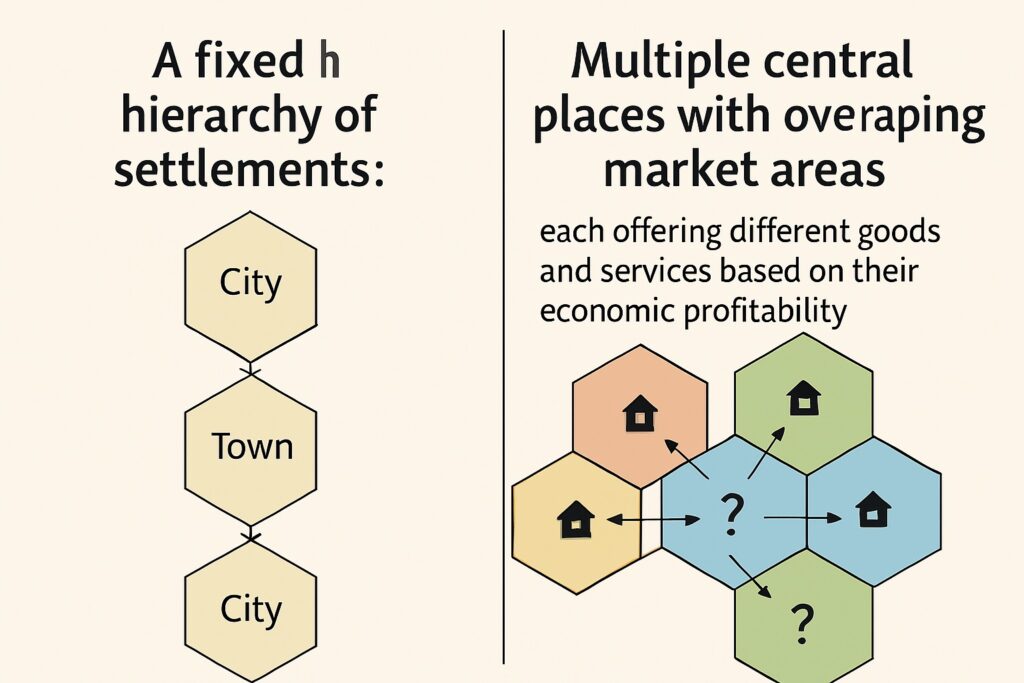
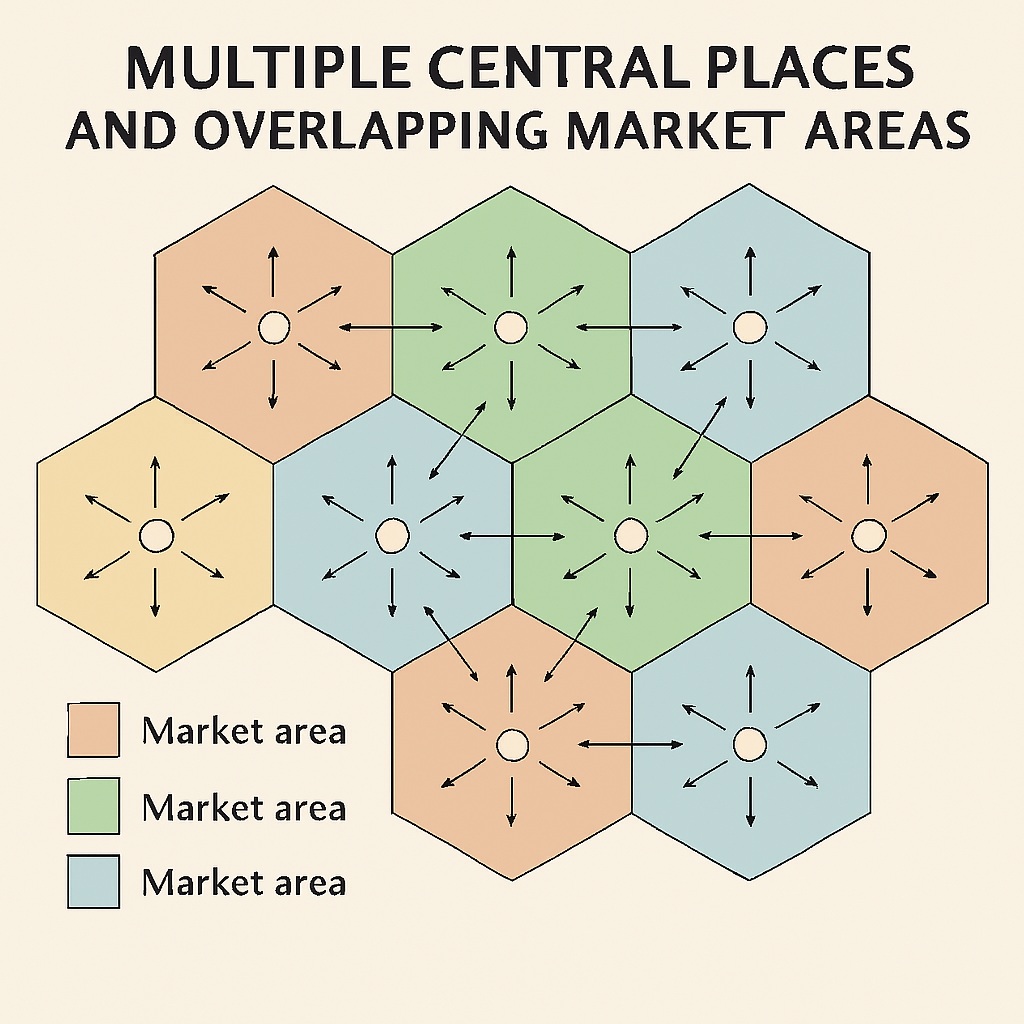
- Overlapping Market Area
Market Principle: The central places are formed to maximize consumer reach and minimize transportation costs.
-
Hexagonal Market Areas: Like Christaller, Losch retained the hexagonal shape but used it more dynamically. He argued that different goods would have different market areas, leading to a series of overlapping hexagons.

Different Size of Hexagonal area in Los Model -
K-Value System: Lösch rejected Christaller’s fixed K-values (K=3, 4, 7). He proposed that K can take any value depending on economic considerations like the profitability of goods and services.
-
Profit Maximization: He focused on profit zones—the area within which a firm can make a profit—and cost zones, where selling the product would result in a loss.
Applications of Lösch’s Central Place Theory
Losch’s Central Place Theory has been used to analyze regional economic development and to inform planning decisions related to the location and distribution of economic activities. The theory provides valuable insights into the spatial organization of settlements and can help to identify the optimal locations for different types of economic activities.
For example, Losch’s theory can be used to analyze the location of industrial clusters in a region. By understanding the demand, supply, and transportation costs associated with different types of economic activities, planners can identify the optimal locations for different industries and minimize the competition between them.
Critiques of Losch’s Central Place Theory
Losch’s Central Place Theory has been criticized for its reliance on assumptions about the rationality of human behavior and the homogeneity of the population. The theory assumes that individuals will always choose the most efficient location for economic activities, regardless of their personal preferences or cultural factors.
Despite its limitations, Losch’s Central Place Theory provides important insights into the spatial organization of economic activities in a region. By understanding the factors that influence the location and distribution of economic activities, researchers and planners can gain insights into the complex processes that shape regional economic development.
